If you’re a gardener living in the warmer regions of the United States and looking to add a tropical touch to your backyard with a tree that’s both ornamental and productive, the loquat tree (Eriobotrya japonica) is a fantastic choice. With its glossy evergreen foliage, fragrant white flowers, and clusters of juicy, golden-orange fruit, the loquat is a beautiful addition to any warm-climate landscape.
Native to southeastern China and widely cultivated in Japan, loquats have made their way into gardens across the southern U.S., from California to Florida and Texas to Arizona. If you live in USDA Zones 8–11, you’re in luck — this hardy, attractive tree thrives in warm, sunny environments and rewards growers with sweet, tangy fruit.
In this guide, we’ll cover everything you need to know to successfully grow loquats in warmer states: from choosing a planting site and caring for your tree to harvesting and using its delicious fruit.
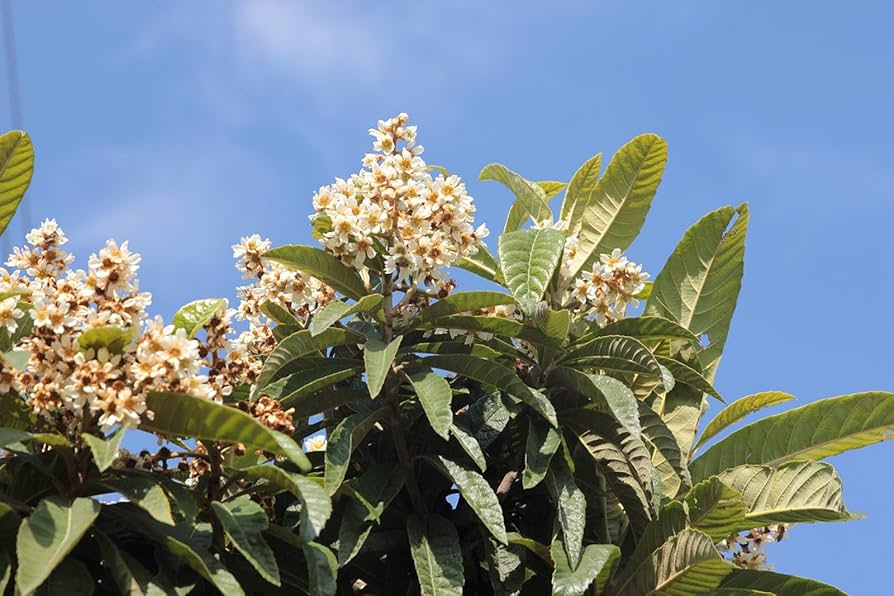
What Are Loquats?
Loquats are small, evergreen fruit trees that typically grow to about 15–30 feet tall. Their large, leathery leaves have a deep green color on top and a fuzzy, silvery underside, giving them a striking appearance year-round.
In late fall to early winter, loquats produce clusters of fragrant, white, star-shaped flowers. By late winter to early spring, these flowers mature into oval or pear-shaped fruit about 1–2 inches long. The ripe fruit has a smooth, thin skin ranging from pale yellow to deep orange, encasing juicy, sweet-tart flesh and several large seeds.
Loquats are rich in vitamins A, B6, potassium, and fiber — making them a healthy, refreshing snack straight from the tree or a delicious ingredient in jams, sauces, and desserts.
Ideal Growing Regions in the USA
Loquats flourish in warm, subtropical to mild-temperate climates and are especially popular in:
- Southern California
- Arizona (low desert regions)
- Southern Texas
- Florida
- The Gulf Coast
- Parts of Louisiana, Georgia, Alabama, and Mississippi
They prefer areas without extended periods of freezing temperatures. Mature trees can survive occasional frosts down to 15–20°F, but flower buds and young fruit are damaged at 26°F or lower, so choosing the right planting location is key.
Choosing the Right Location
Loquats need a sunny, sheltered spot to thrive and produce abundant fruit. Look for a site that offers:
- Full sun for at least 6–8 hours daily.
- Protection from strong winds, which can damage flowers and reduce fruit production.
- Well-draining soil. Loquats dislike standing water and heavy clay.
They’ll do well in a range of soil types, including loamy and sandy soils, provided drainage is good. An ideal soil pH is between 6.0 and 7.0.
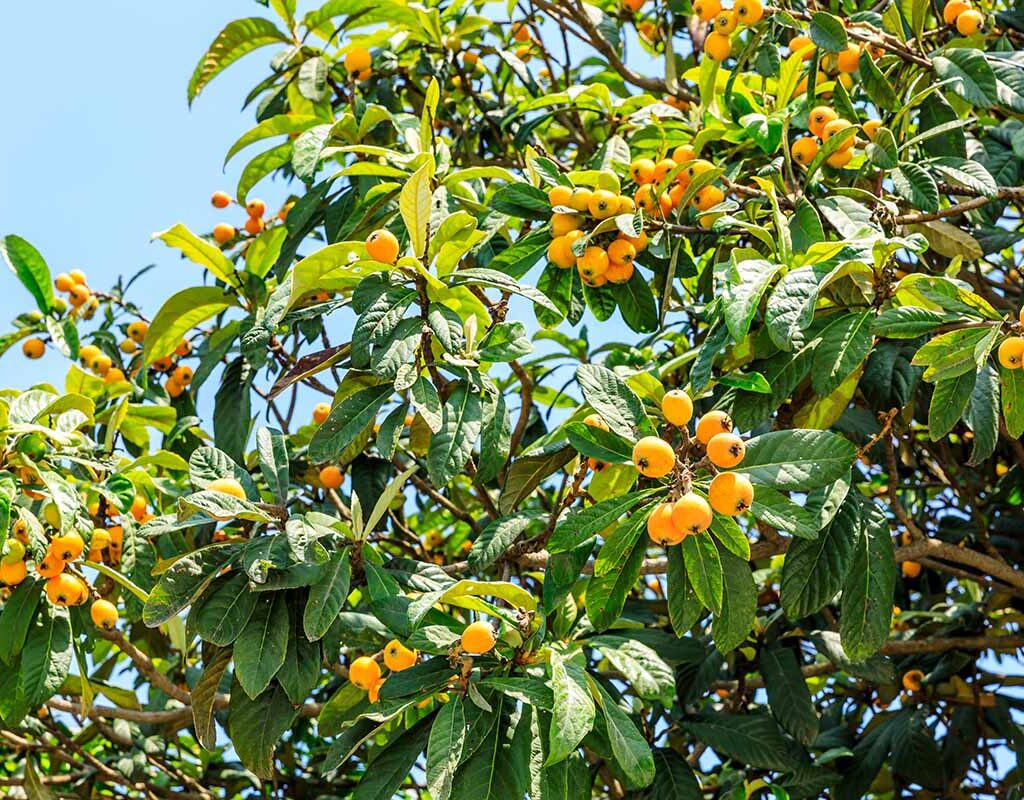
How to Plant Loquats
When to Plant:
The best times to plant loquat trees are spring or fall when temperatures are moderate, and the young tree can establish its roots without heat stress.
Planting Instructions:
- Dig a hole twice as wide and slightly deeper than the root ball.
- Remove the tree from its container, gently loosening the roots if they’re tightly packed.
- Place the tree in the hole so the top of the root ball is even with or slightly above ground level.
- Backfill with native soil mixed with organic compost to encourage healthy root growth.
- Water thoroughly after planting to settle the soil.
- Apply a 3–4 inch layer of mulch around the base (keeping it a few inches away from the trunk) to retain soil moisture and suppress weeds.
Spacing: If planting multiple loquats, space them 15–25 feet apart to allow for proper growth and air circulation.
Caring for Your Loquat Tree
Watering:
Loquats need regular watering, especially during their first few years of establishment.
- Water deeply once or twice a week, adjusting for rainfall.
- Mature trees are somewhat drought-tolerant but will bear better fruit with consistent moisture.
Fertilizing:
Feed loquats three times a year:
- Early spring
- Early summer
- Early fall
Use a balanced 10-10-10 fertilizer or one formulated for fruit trees. Avoid over-fertilizing, which can lead to excessive leaf growth at the expense of fruit.
Pruning:
Minimal pruning is needed. Focus on:
- Removing dead or crossing branches.
- Opening up the canopy to improve air circulation.
- Shaping the tree to maintain a manageable size.
Prune after harvest, in late spring or early summer.
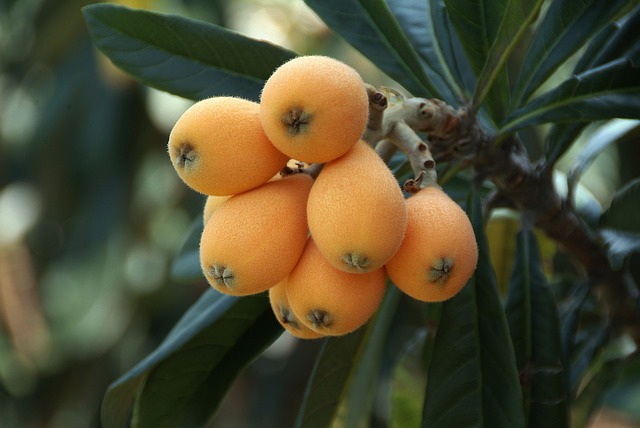
Pollination and Fruit Production
Loquats are typically self-fertile, but having a second tree nearby can increase fruit yields. Bees and other insects handle pollination naturally.
Flowering Season:
- Late fall to early winter.
Harvest Season:
- Late winter to early spring, depending on climate and variety.
Loquats ripen unevenly on the tree and are best picked when fully colored and slightly soft to the touch. Handle gently as the fruit bruises easily.
Common Pests and Problems
While relatively pest-resistant, loquats can occasionally encounter:
- Aphids
- Scale insects
- Fruit flies
- Birds (they love ripe loquats!)
Control pests with organic insecticidal soap or neem oil. Netting can deter birds during fruiting season.
Diseases like fire blight and pear blight can affect loquats, especially in humid areas. Prune infected branches and disinfect tools between cuts.
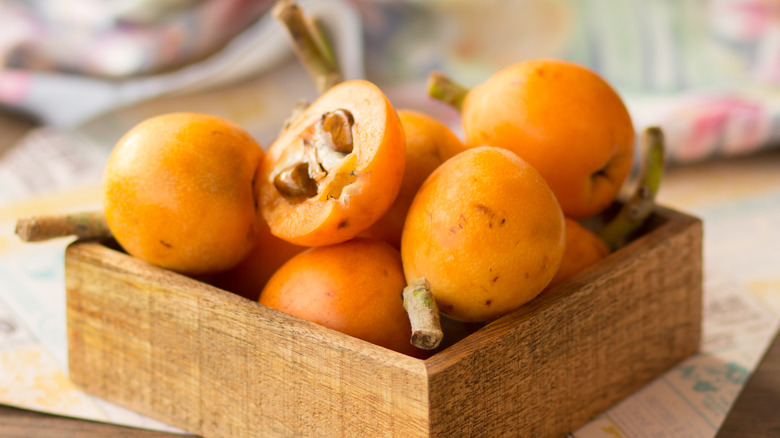
Popular Loquat Varieties for Warm States
Some loquat cultivars are especially well-suited for warm U.S. regions:
- ‘Big Jim’: Large, sweet, orange-yellow fruit. Excellent for fresh eating. Popular in California.
- ‘Champagne’: Juicy, pale yellow fruit with a mild, sweet flavor. Reliable and productive.
- ‘Gold Nugget’: Small to medium fruit with firm, flavorful flesh.
- ‘Vista White’: White-fleshed loquat with a sweet, mild flavor and good cold tolerance.
Check local nurseries for cultivars suited to your specific growing zone.
Uses for Loquats
Beyond fresh eating, loquats are wonderfully versatile:
- Jams and jellies
- Fruit sauces for poultry or pork
- Loquat wine or liqueur
- Pies and tarts
- Dried snacks
Their flavor is a delicious blend of apricot, citrus, and mild mango.
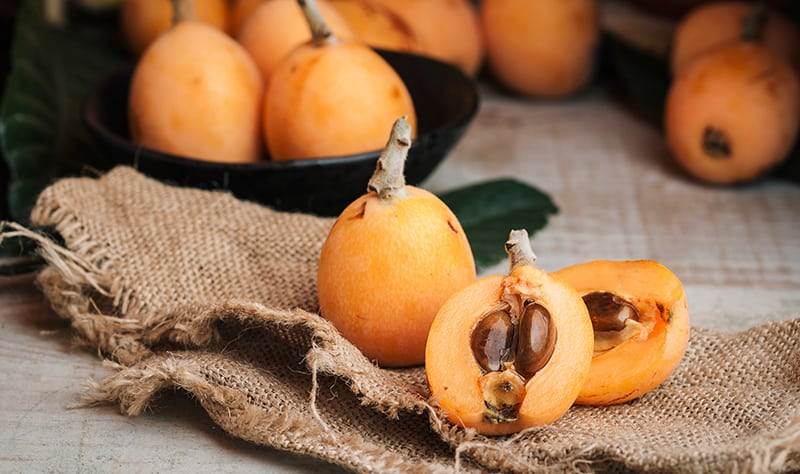
Final Thoughts
If you live in a warmer state and love growing unique, productive trees, loquats are a fantastic choice. Their year-round beauty, minimal care requirements, and bountiful, sweet-tart fruit make them a rewarding addition to any garden or edible landscape.
By selecting the right variety, choosing a sunny, sheltered location, and providing a little care throughout the year, you’ll enjoy fragrant blooms and generous harvests for years to come.

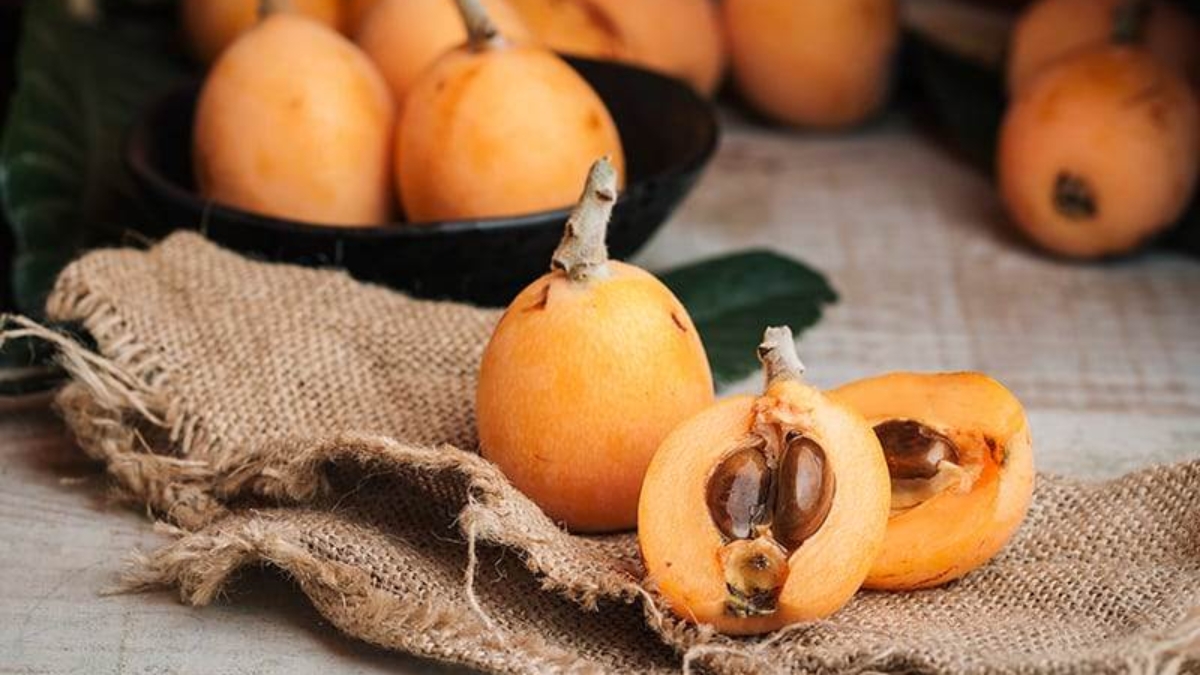




Leave A Comment